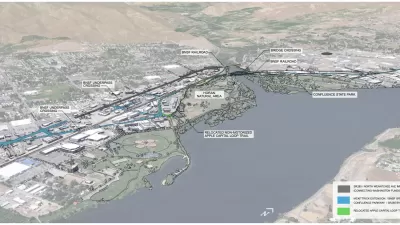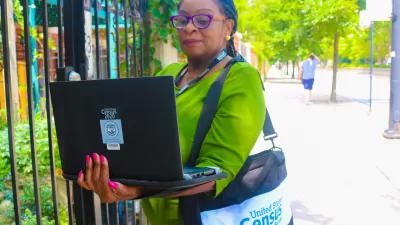At Census time, America's prisoners have typically been counted as residents of the places they are imprisoned. But with nearly 1% of the U.S. population behind bars, where they're counted is counting more to the urban areas they came from.
"Counting prisoners where they're incarcerated didn't matter a lot when America had modest numbers of inmates, usually held in institutions near their homes.
But all that's changed in the last three decades as America's prisoner counts have soared from about 500,000 in 1980 to 2.3 million today. The combination of tough 'law-and-order' politics and development of a vast 'prison industrial complex' has led to confinement of predominantly city-based convicts in hundreds of new prisons in small town areas."
Now some counties with prisoner populations of up to 20% are gaining more congressional representation and federal funding. Neal Pierce takes a look at the problem and how some officials are trying to find a solution.
FULL STORY: How the Census Counts Prisoners: Significant Political Stakes

Trump Administration Could Effectively End Housing Voucher Program
Federal officials are eyeing major cuts to the Section 8 program that helps millions of low-income households pay rent.

Planetizen Federal Action Tracker
A weekly monitor of how Trump’s orders and actions are impacting planners and planning in America.

Ken Jennings Launches Transit Web Series
The Jeopardy champ wants you to ride public transit.

Driving Equity and Clean Air: California Invests in Greener School Transportation
California has awarded $500 million to fund 1,000 zero-emission school buses and chargers for educational agencies as part of its effort to reduce pollution, improve student health, and accelerate the transition to clean transportation.

Congress Moves to End Reconnecting Communities and Related Grants
The House Transportation and Infrastructure Committee moved to rescind funding for the Neighborhood Equity and Access program, which funds highway removals, freeway caps, transit projects, pedestrian infrastructure, and more.

From Throughway to Public Space: Taking Back the American Street
How the Covid-19 pandemic taught us new ways to reclaim city streets from cars.
Urban Design for Planners 1: Software Tools
This six-course series explores essential urban design concepts using open source software and equips planners with the tools they need to participate fully in the urban design process.
Planning for Universal Design
Learn the tools for implementing Universal Design in planning regulations.
Heyer Gruel & Associates PA
Ada County Highway District
Institute for Housing and Urban Development Studies (IHS)
City of Grandview
Harvard GSD Executive Education
Toledo-Lucas County Plan Commissions
Salt Lake City
NYU Wagner Graduate School of Public Service




























